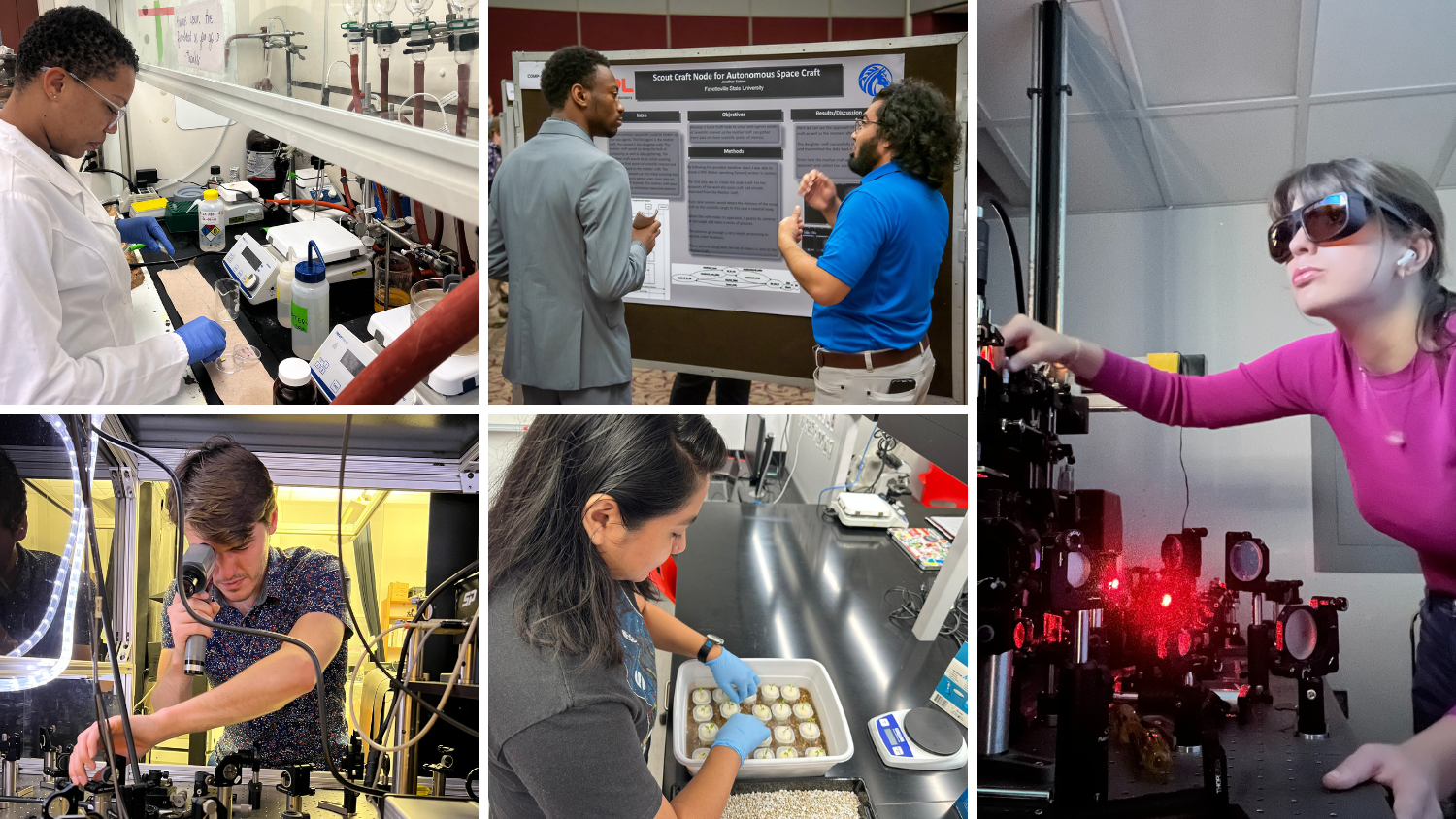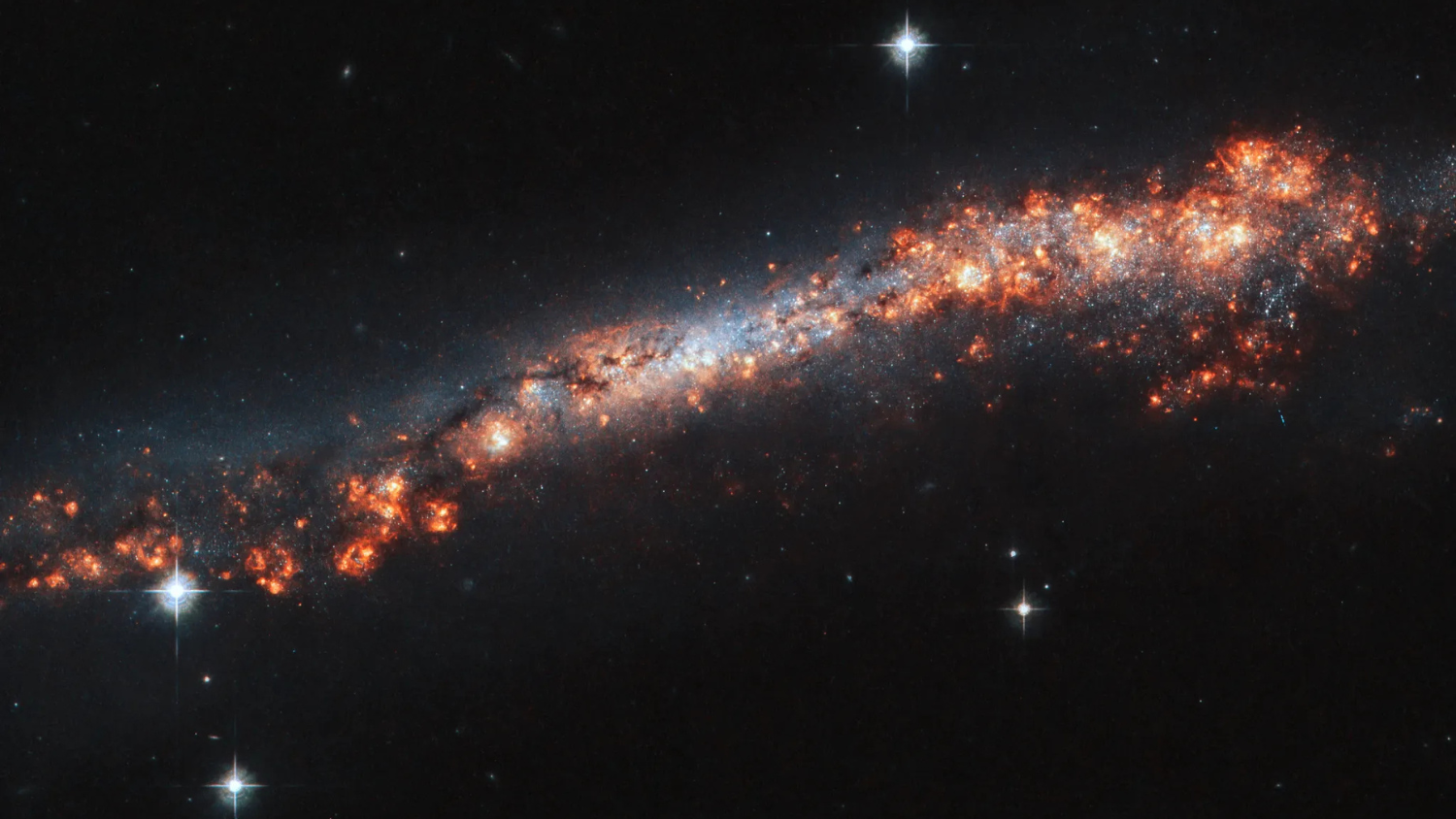NC Space Grant Supports Student’s STEM-Career Aspirations

Above: Patrick Gray listens to a classmate’s research poster presentation at the NC Space Grant 2019 SPACE Symposium in April.
By Marisa Incremona and Lee Cannon
“One of the goals of my Ph.D. is to help bridge the ocean and space exploration communities,” says Patrick Gray, a North Carolina Space Grant 2018 Graduate Research Fellowship awardee and doctoral candidate at Duke University.
As an undergraduate, Gray’s experimental weather balloon project carried photographic equipment and a prototype electronic system to the edge of space. Working with a few members of the UNC Students for the Exploration and Development of Space group and NC Space Grant support, Gray captured images of the Earth’s curvature and tested an Arduino-based electronic setup. His goal was to see if it could operate above 80,000 feet, in an environment of extreme cold and high radiation.
Teaching a Computer to Spot Whales
Now as a doctoral candidate, Gray is interested in the sea and in space, specifically how advances in marine observation technology and in remote sensing for space exploration can inform each other. Gray received NC Space Grant funding as an undergraduate and was also a Graduate Research Fellow.
“The focus of my fellowship,” Gray explains, “was to use NASA’s satellite remote-sensing capabilities to monitor and protect endangered marine mammals.”
The cetaceans, or whales and dolphins, that Gray studied have a major impact on ocean ecosystems and can serve as a canary in the coal mine for ocean health. Gray notes, “The ability to monitor cetaceans across the ocean via satellite would be a powerful tool for protecting these species and better understanding ocean-scale health. When we combine the high-resolution satellites that are capable of detecting whales with NASA’s and NOAA’s oceanographic-based remote-sensing tools, we can begin to get an informative picture of cetacean ecology and what that means for the rest of the ocean.”
Without satellites and remote-sensing technology, cetaceans are difficult to observe and count, because many species travel widely and spend large amounts of time submerged. Therefore, management programs seeking to conserve those species have been hampered until now by the time, money and labor required to gather information about population levels. The NASA and NOAA satellite images and remote-sensing capabilities are now poised to revolutionize the way scientists and conservationists monitor a wide variety of ocean life.
However, there is a drawback to using satellite imagery: The sheer size of the oceans means the number of individual images collected is staggering. How could one person or research group possibly sift through them all looking for specific animals?
To solve that problem, Gray added another layer to his research methods: convolutional neural networks, or CNNs. A type of machine learning algorithm, CNNs allowed Gray to teach a computer to find whales in satellite images for him.
“Neural networks are emerging as a powerful tool for automating object detection across data domains,” Gray said, “and can be applied to satellite or drone-based imagery to generate new population-level insights.

Vast Areas, Big Data
Gray first became interested in using NASA’s satellite remote sensing capabilities and drones to monitor marine mammals because of satellites’ and drones’ powerful ability to provide information on large swaths of the globe.
“One of the aspects that constantly frustrates me about conventional conservation efforts,” Gray says, “is how small scale they tend to be. Many projects need to be localized and site specific in order to be effective, but that makes them incredibly difficult to scale up.” However, using drones, satellite imagery and convolutional neural network technology to rapidly aggregate and analyze data dramatically increases the possible scale of research into marine mammal population and health. Technological advances in many areas have made research such as this possible, including advancement in artificial intelligence.
“Deep learning (DL) is a branch of artificial intelligence that has enabled major advances in machine perception. In practice, DL is the process of training a neural network by showing it labeled examples of data in order to teach it to predict that label based on the input data alone. Common examples include Facebook’s ability to recognize faces and suggest a tag or a self-driving car’s ability to detect a stop sign.”
Gray is excited about the possibilities new technologies and data-analysis advances are opening up in the marine ecology and remote sensing fields. “I’m hoping this fellowship will be a small step in this direction and another example of the synergy between these two fields,” he says.
“Another recent collaborative project, which the NC Space Grant Graduate Research Fellowship helped support, laid early ground work for incorporating drones into wetland monitoring in coordination with satellites,” Gray explained. “Drones, machine learning approaches to remote sensing analysis, and the fusion of data across different sensor platforms are all rapidly pushing forward our ability to monitor the Earth.” The scientific journal, Remote Sensing, accepted Gray and his collaborators’ work for publication in its August 2018 issue.
In December 2018, Gray attended the prestigious American Geophysical Union’s 2018 Fall Meeting in Washington, D.C., where he presented his research methods and findings. He said, “Conversations during my poster presentation inspired a whole multitude of new questions, problems and potential solutions that the team and I are excited to explore in order to improve coastal monitoring.”
UPDATE: July 2019, Patrick Gray has published a new paper about his research in Methods in Ecology and Evolution from the British Ecological Society. He is currently spending part of the summer of 2019 in Iceland conducting further research using drones.
NC Space Grant Supports Aspirations
During the 2018-19 academic year, in partnership with NASA, NC Space Grant invested $263,750 in 45 students, like Patrick Gray, to pursue research and professional development opportunities. The program awarded 14 Graduate Research Fellowships, 14 Undergraduate Research Scholarships and 17 NASA and industry internships. Since Gray’s award, other students working in or with the Duke University Marine Robotics and Remote Sensing Laboratory have won NC Space Grant funding, some through the joint fellowship with NC Sea Grant, for their projects using remote sensing and drone technology in the coastal environment. Anna Windle, a master student and a member of the lab, won a 2018 joint fellowship, and Emily Ury, an Ecology PhD student and close collaborator of the Duke Marine Lab, earned a 2019 joint fellowship.
These opportunities allow students to explore relevant academic interests that will then prepare them for STEM careers. Notably, former awardee Christina Hammock Koch is currently living and working aboard the International Space Station and is set to break the record for longest spaceflight for a woman by her mission’s end. Zena Cardman, another former awardee, was selected as an astronaut candidate in the Class of 2017 and will be flying future missions.
- Categories:


